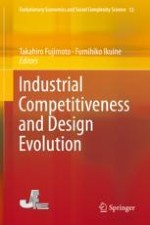2018 | OriginalPaper | Buchkapitel
The Nature of International Competition Among Firms
verfasst von : Yoshinori Shiozawa, Takahiro Fujimoto
Erschienen in: Industrial Competitiveness and Design Evolution
Verlag: Springer Japan
Aktivieren Sie unsere intelligente Suche, um passende Fachinhalte oder Patente zu finden.
Wählen Sie Textabschnitte aus um mit Künstlicher Intelligenz passenden Patente zu finden. powered by
Markieren Sie Textabschnitte, um KI-gestützt weitere passende Inhalte zu finden. powered by
